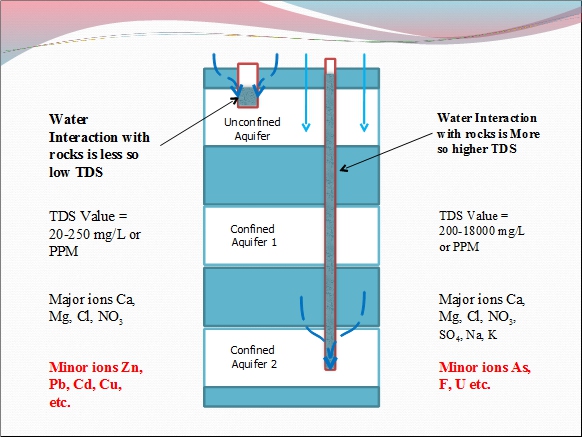
Bandu Singh, a lean old man aged around 60, has spent his entire life living in a small mud house in Kaalapani, a small village located in Manawar block of Dhar district, Madhya Pradesh. Kaalapani has a population of 849 people of which 99.41% (as per Census 2011) are listed as belonging to Schedule Tribes (ST).
The area
Dhar lies in the southern tribal belt of Madhya Pradesh. It is a drought prone area which also has high geogenic concentration of fluoride in its groundwater. People are dependent on groundwater which they traditionally withdrew from open wells but with the increase of irrigated agriculture, groundwater levels have started depleting, requiring people to go deeper. Geogenic contamination is proportional to the depth of wells, as deeper wells allow for more contact with the rocks. A study conducted in 2011 by People’s Science Institute (PSI), Dehradun detected endemic fluorosis in 31 villages in Dhar district, Madhya Pradesh
Changing times
Bandu Singh has witnessed the past. "Once upon a time", he says, "this area had rich forest cover, and clear streams would flow through the villages. Surface and well water was used for drinking purposes and people did not suffer from any major diseases. But these forests are now gone and surface water is no more available".
The use of hand pumps started when he was a young adult. He remembers seeing his parents and others in the village fetching water from hand pumps for domestic use. With the increase of irrigated agriculture, the groundwater level started depleting. Wells would usually dry up in the summers requiring people to dig deeper; hence the switch to handpumps. As electricity made it possible to draw water from deeper aquifers, tube wells were also introduced in the village but then people started noticing something unusual.
Their teeth started turning yellow and the soft leg bones of some of the young children started bending. Adults would feel pain in their joints and stomach disorders became quite common. Like the other villagers, Bandu Singh was not aware of the cause of all this. He thought that it was because of a change in their eating habits and poor quality of food. He was very worried about the health of his disabled son, daughter in law and his five month old grandson. He recalls, “One day some people came to our village and started testing our well, hand pump and tube well water. I could not understand why they were testing the water of all the sources. Everybody in the village started talking why these outsiders are collecting and testing our village water but this was not all. This team then started asking for our urine samples. When they asked for my urine sample for testing, I agreed very reluctantly but when the test results were disclosed, I could not believe that the water which gives life to people is actually causing serious health problems in the village”.
The reason
Fluoride has an inverse relation with calcium in the body. According to a study, when calcium levels diminish, fluoride levels in the body rise. Skeletal fluorosis and an increased risk of bone fractures occur as a result of long-term excessive exposure to fluoride.
In Dhar people use hand pumps, tube wells and well water for their irrigation and domestic requirements. According to a study conducted by PSI in some of the villages here, the tube wells and hand pumps had a higher concentration of fluoride but the wells were safe sources with fluoride concentration below the permissible level of 1.5 mg/l.
The solution
"I asked Puja and Amrita from PSI if anything could be done. They pointed out that some drinking water sources were safe. Now for cooking and drinking purpose we do not use water from the hand pump which is nearby. Instead we go downhill to get water from a well”, says Bandu.
The reason it worked
This story, as narrated by Bandu, seems fairly simplistic. After all, the PSI team did not do anything, did they? What we need to know then, is despite Bandu's narrative, fluoride contamination was diagnosed in the village in 2005. The state's Public Health and Engineering Department had also sealed off the most contaminated tubewells and marked the others red to indicate that they were not suitable for drinking. However, they did not tell anyone in the village.
The PSI team told everyone. And that made all the difference.
They did not stop there either. Based on the hydrogeological survey and water quality assessment, PSI has implemented community based safe drinking water supply systems using wells in 3 villages - Kaalapani, Badichetri and Daheria of Manawar and Dharampuri blocks of district Dhar and is now working in four new villages with the support of Frank Water, UK. In each village three water tanks have been constructed which supply well water twice a day to the villagers. The entire system is being operated and managed by the communities themselves. This kind of participatory and scientific approach is safe, sustainable and less expensive than the installation of defluoridation units attached to hand pumps since they become dysfunctional after sometime too.
Bandu Singh's main concern has now disappeared. He says, "My life is almost over but at least there is some hope for my children and grandson. They will be able to use safe water and lead a healthier life”.
/articles/how-bandu-singh-recovered-hope